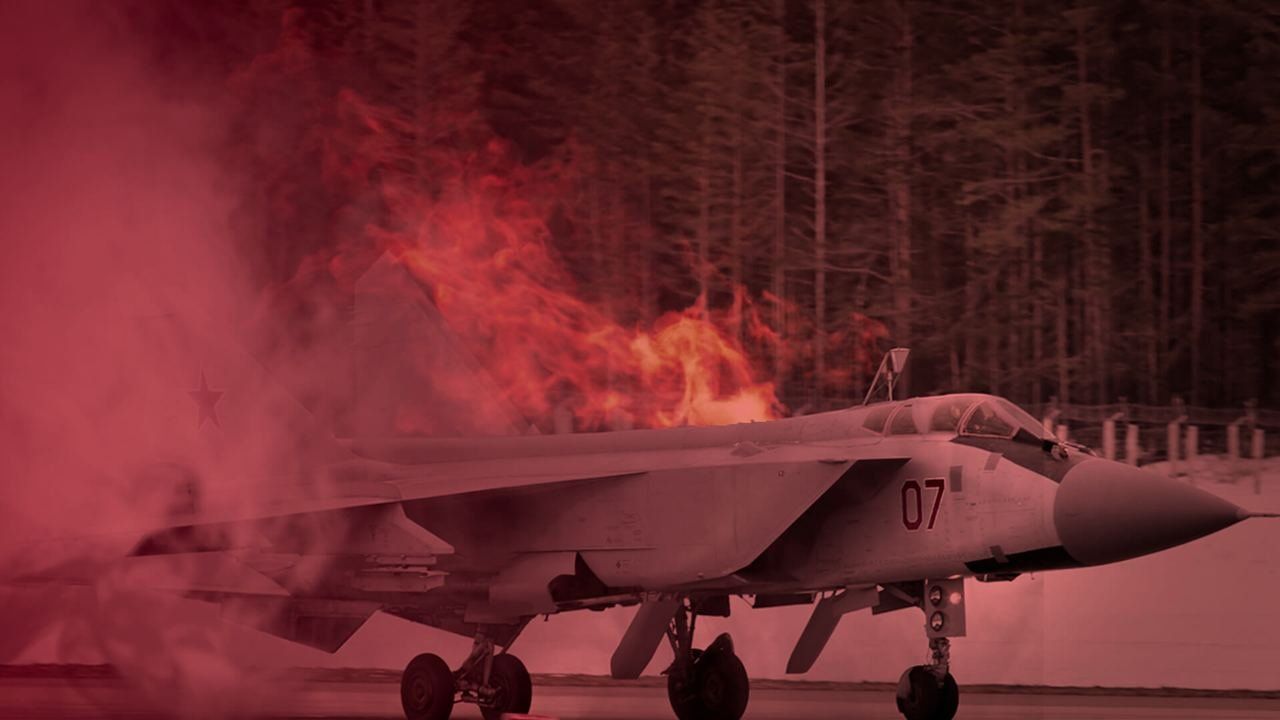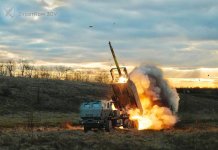On December 25, one of the three Russian Mikoyan MiG-31K aircraft that were stationed at the Machulichy airfield in Belarus reportedly caught fire and was deemed inoperable “in the near future.”
Russia’s ‘Super Weapon’ T-14 Armata Tanks Spotted Inside ‘Special Military Operation’ Zone; Experts Discuss Deployment To Donbas
The “Belarusian Gayun” monitoring group revealed the information, citing sources. The MiG-31Ks are capable of carrying the Kh-47M2 Kinzhal hypersonic missiles.
These missiles are virtually impossible to intercept. As a result, an air alert is issued throughout Ukraine whenever MiG-31K aircraft take off.
Three MiG-31Ks with the registration numbers RF-92215, RF-92445, and RF-95194 reportedly arrived in Machulichy on December 13, according to Belaruski Hayun. This was the second mission of such an aircraft in Belarus.
Earlier, three of them landed in Belarus on October 16 and stayed for 46 days. This time, the Machulishchy airport is home to not just MiG-31Ks, but also Ilyushin IL-76 A-50U “Sergey Atayants” AWACS planes with registration number RF-93966.
Two of the three MiGs had flown at least four sorties on December 16, 17, 21, and 25. The third, with the registration RF-95194 (board number “50 blue”), went up in flames in its engine on December 25, rendering it unflyable “in the near future,” according to Belaruski Hayun’s sources.

“Whether the age of the vehicle is to blame here (the MiGs were produced from 1975 to 1994 and adopted in 1981), or the lack of professionalism of the flight crew (this aircraft was modernized after 2015), the fact of temporary incapacitation of a potential source of death for the Ukrainian people on Christmas may be considered a miracle,” Belaruski Hayun noted.
“What is this if not a Christmas miracle?” Belaruski Hajun questioned humorously.
Meanwhile, on December 25, another Russian MiG with the registration RF-92445 based in Machulichy made two two-hour flights leading to air raid warnings being issued throughout Ukraine.
However, no new Russian attack was reported. Once the planes returned to their bases, the all-clear signal was issued. Russian military jets were flying practically nonstop, according to Yuriy Ihnat, a spokesperson for the Ukrainian air force, on national television earlier on December 25.
Since mid-October, Russia has attacked the energy infrastructure of Ukraine with several missile and drone strikes, causing power outages and emergency blackouts in numerous locations.
On December 24, a Russian strike on the recently recaptured southern city of Kherson killed at least ten people and injured 58, according to authorities, which Kyiv characterized as wanton killing for pleasure.
Russia’s MiG-31 Armed With Hypersonic Dagger
Russia deployed MiG-31 fighter jets armed with hypersonic Kh-47 Kinzhal (dubbed “Dagger” in Russian) missiles to attack targets early in its invasion of Ukraine. The range of the Kh-47 Kinzhal missile is claimed to be 2000 kilometers.
It can carry a nuclear warhead with a 500-kiloton yield or a fragmentation warhead weighing around 499 kilograms which is 33 times more potent than the atomic bomb that destroyed Hiroshima.
The missile has a flatter trajectory than a typical ballistic missile and can travel at speeds between 5 and 12 times the speed of sound, giving air defenses little time to prepare. The missile’s ability to maneuver at all points along its flight path makes intercepting challenging.

Using a radar seeker, the missile can accurately strike stationary and moving targets. The Kh-47M2 Kinzhal gained notoriety this year after Russannouncedent on March 19 that it had used its Kinzhal hypersonic missiles to decimate a weapons depot in the village of Deliatyn in the Ivano-Frankivsk region of western Ukraine.
That was the first time a hypersonic weapon had ever been used in combat. “It’s almost impossible to stop the missile,” US Vice President Joe Biden stated during a conference with business executives.
The Kinzhal missile needs to be fired from a high-altitude, swift-flying aircraft. Consequently, the MiG-31, a Mach 3-capable air defense interceptor, is ideal for carrying the missile. Russia has also been boosting the number of MiG-31Ks stationed in the Kaliningrad Region as part of further strategic deterrence measures against the West.
According to a recent EurAsian Times article, a MiG-31 equipped with a Kinzhal missile can reach the majority of West European capitals, including London, Paris, Rome, and many others, in under 7–10 minutes. Nevertheless, it is only known that 10 to 20 MiG-31s have been modified to fire Kinzhals thus far.
- Contact the author at ashishmichel(at)gmail.com
- Follow EurAsian Times on Google News




